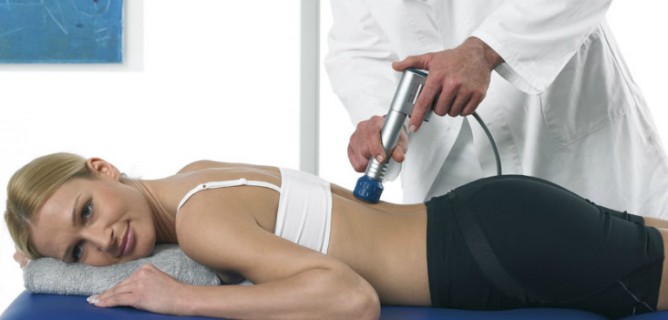By Annette “Dr Z” Zaharoff, M.D.
It may sound like a plot device from a movie featuring Batman and The Joker, but it’s no laughing matter: Doctors are using what is commonly called shockwave therapy to stimulate the human body’s production of laughing gas to reduce pain, improve blood flow, promote bone healing and more.
Shockwave therapy in medicine has been around for more than two decades, ever since it was introduced as a noninvasive, safe and fairly painless way to break up kidney stones in the body. Along the way, doctors discovered that these shockwaves, or more correctly referred to as radial pressure waves, appeared to promote increased bone density and accelerated tissue healing.
Radial pressure waves alter the chemical balance in the body in a way that elevates nitrous oxide levels, also known as laughing gas, which is an important cellular signaling molecule that complements the body’s healing process. I learned more about this exciting new phase in sports medicine at a recent stem cell training conference in Austin sponsored by Boston BioLife.
In essence, a modified air compression gun is placed against the skin at the point of pain or injury to deliver radial pressure waves to muscle and joints. In some cases, it may take three to four sessions to achieve the desired results. There are some possible side effects that normally disappear within 10 days, including reddening, swelling and bruising.
Several research studies have shown promising results in the effective utilization of radial pressure waves to treat heel pain, shin pain, knee pain, hamstring pain and more.
A shoulder pain study by researchers in Heidelberg, German of 35 patients about 48 years old found more than a fourth of the group reported being pain free within a month of pressure wave therapy, and more than 80 percent were pain free within a year. All of these patients had been suffering from shoulder pain for more than two years before the treatment.
A 2007 study published in the American Journal of Sports Medicine involving orthopedists from Germany, England and the United States looked at radial pressure wave therapy versus more traditional therapies for knee pain. The study found: “Extracorporeal shockwave therapy appeared to be more effective and safer than traditional conservative treatments in the management of patients with chronic patellar tendinopathy.”
As the name of our clinic clearly states, I’m always interested in non-surgical options for helping patients to heal. I’m also especially interested in the applications for radial shock wave therapy in improving the effectiveness of Regenerative Injection therapies such as Stem Cell Therapy and Platelet-Rich Plasmas (PRP) Therapy. As many of you know, I have been a pioneer in the utilization of these injection therapies to help address injuries that simply won’t heal.
Radial pressure wave therapy is being used to help break up scar tissue and adhesions that may interfere with a good injection. If the use of radial pressure waves is found to be a best practice in certain cases to deliver effective PRP and Stem Cell injections, I won’t hesitate to add a device and get the necessary training to make that treatment available to my patients.
It’s an exciting time to be in sports medicine. I will have more to share once I get back from the 22nd annual Prolotherapy Conference and Research Symposium later this month at the University of Wisconsin.
Dr. Annette “Dr. Z” Zaharoff heads the Non-Surgical Center of Texas, focusing on non-surgical treatments to relieve pain and repair injuries. A former professional tennis player who competed on the WTA circuit, Dr. Zaharoff has been utilizing regenerative injection treatments including Stem Cell Therapy, PRP Injection Therapy and Prolotherapy for more than a decade. Learn more about her at www.drzmd.com. You can follow her on Facebook at www.Facebook.com/DrZaharoff.

